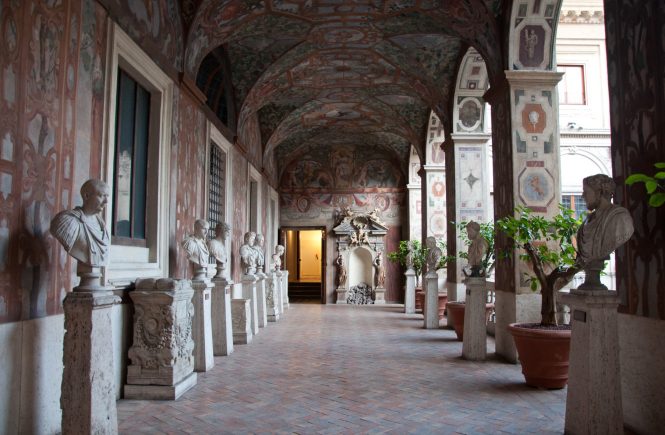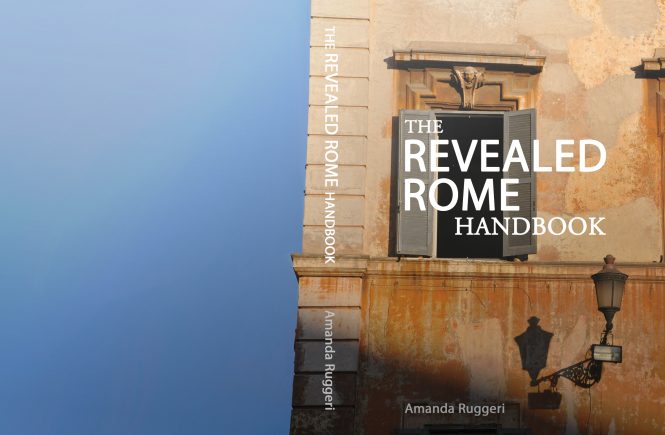I can completely geek out on museums in Rome. So here’s an embarrassing confession for you: until a few months ago, I’d never been to Palazzo Altemps. And that’s even though, as one of the National Rome Museums, Palazzo Altemps was on the same entry ticket as some of my other favorites — Palazzo Massimo and Crypta Balbi in particular.
I told you. Embarrassing. Even more so when I went in December and realized just how much I’d been missing.
Brief background: Palazzo Altemps is, itself, a stunning 15th-century palace (albeit one with foundations that date back to an ancient Roman house) just around the corner from Piazza Navona. In 1568, a German cardinal with a penchant for ancient sculpture purchased it, and thus the collection was born. Although many objects have since been parceled off to other museums (the Louvre, for one), some extraordinary pieces remain — backdropped by frescoed rooms with painted, wood-beamed ceilings. And did I mention that you might be in these rooms by yourself? (It seems I’m not the only one who left Palazzo Altemps near the bottom of my to-do list).
Like this guy: the Grand Ludovisi Sarcophagus, which dates to the 3rd century; it was discovered near the Porta Tiburtina in 1621.
Let’s take a closer look, shall we? Because in case you missed it: the expressions on the pair in the middle — the Roman soldier, and the barbarian he’s about to slaughter — seem like exquisite portrayals of the kind of emotions that would actually be running through your veins (if there were room for any aside from ongoing expletives, that is).
If that weren’t bloody enough for you, there’s also this sculpture: the famous Ludovisi Gaul, helpfully subtitled in its info plaque, “Gaul killing himself and his wife.”
If it sounds, and looks, familiar, it’s because it’s linked to the Dying Gaul, located in the Capitoline Museums, and may have been part of the same sculptural grouping. Either way, it’s thought to have been a copy, commissioned by Julius Caesar himself, of an earlier original.
The collection is the reason to come. But even if that’s not enough to move you, the Renaissance palazzo itself is lovely.
And it’s a fantastic example of the multilayered aspect of Rome’s history. Quite literally, as in the case of the room below:
The ceiling isn’t meant to look like that. But when it was restored, earlier layers, and decorative schemes, were found: beneath the 17th-century frescoes of battle scenes are the 16h-century grotesques, and below that, on the upper part of the plaster and the ceiling, are 15th-century decorations.
The same idea crops up in another part of the museum, but in reverse — the underground, not the ceiling — and older. The excavations below show the remains of a 12th-century tower.
So. We know you’re already planning on the Vatican and Capitoline museums, and (I hope!) the Borghese Gallery and Palazzo Massimo. The Palazzo Altemps is on the same ticket as the Palazzo Massimo, and oh so convenient to get to, since you’re probably already going to Piazza Navona, right? In other words, there’s really no excuse not to go. At least, I have no idea what mine was for so long.
Palazzo Altemps is at Piazza di Sant’Apollinare 46, right outside Piazza Navona. Open daily except Mondays.
If you liked this post, you’ll love The Revealed Rome Handbook: Tips and Tricks for Exploring the Eternal City, available for purchase on Amazon or through my site here! I’m also free for one-on-one consulting sessions to help plan your Italy trip.









